
As we navigate the journey of aging, the importance of maintaining a robust and consistent workout routine intensifies significantly. Beyond the common goals of weight management and muscle building, engaging in regular physical activity after the age of 50 becomes a critical strategy for prevention. Research indicates that beginning each decade after 30, individuals can experience a notable loss of muscle mass, a condition known as sarcopenia, potentially losing as much as three to five percent. Yet, the benefits extend far beyond mitigating muscle loss; regular exercise, even a few sessions per week, is scientifically shown to play a pivotal role in preventing cognitive decline, boosting metabolic function, stabilizing blood sugar levels, and ultimately reducing the overall risk of mortality.
A frequent discussion arises regarding the optimal balance between cardiovascular workouts and strength training for individuals over 50. While scientific consensus on this specific balance remains evolving, the good news is that integrating more strength-focused exercises that also elevate your heart rate can effectively provide the advantages of both worlds. Chris Ryan, a founding trainer for at-home workout Mirror, aptly summarizes this perspective: “There is always a great debate between too much cardio versus too much strength work. You want to be strong enough to pick up your grandkids and some grocery bags, but you also don’t want to be winded going up a flight of stairs. Contrary to popular belief, you can get strong and build your lungs at the same time.” This holistic approach underscores the adaptability and comprehensive benefits available through strategic exercise choices.
Ready to embark on a path toward enhanced vitality and functional strength? We’ve compiled a meticulously curated selection of the best exercises, each designed to contribute significantly to losing weight, fostering overall health, and building essential muscle mass for adults navigating their fifth decade and beyond. These movements are chosen for their efficacy, practicality, and their capacity to address the unique physiological needs of older adults, empowering you to sustain an active and fulfilling life.

1. **Planks**
Core strength forms the fundamental bedrock upon which all other forms of strength are built. As individuals progress through the aging process, a dedicated focus on strengthening abdominal muscles becomes increasingly vital for effectively stabilizing both the back and the hips. This critical role in foundational stability is precisely why Tatiana Lampa, a NASM-certified corrective exercise specialist, highly recommends planks as one of the most beneficial exercises to incorporate into any routine.
To execute a forearm plank correctly, begin by placing your forearms directly on the floor, ensuring your shoulders are aligned precisely over your elbows. Your hands can remain flat on the floor, or you may choose to clasp them together to form a fist for added stability. The key to engaging the entire core lies in tightening your abdominal muscles, shoulders, back, and glutes, then extending your legs straight back into the plank position. Aim to hold this position for approximately 30 seconds, diligently maintaining a straight line from head to heels. It is crucial to prevent your butt from rising too high or your stomach from sagging; this is achieved by actively bracing your core and subtly tucking your pelvis inward. Gradually, work towards the goal of holding the plank for a full minute, progressively building endurance and strength.
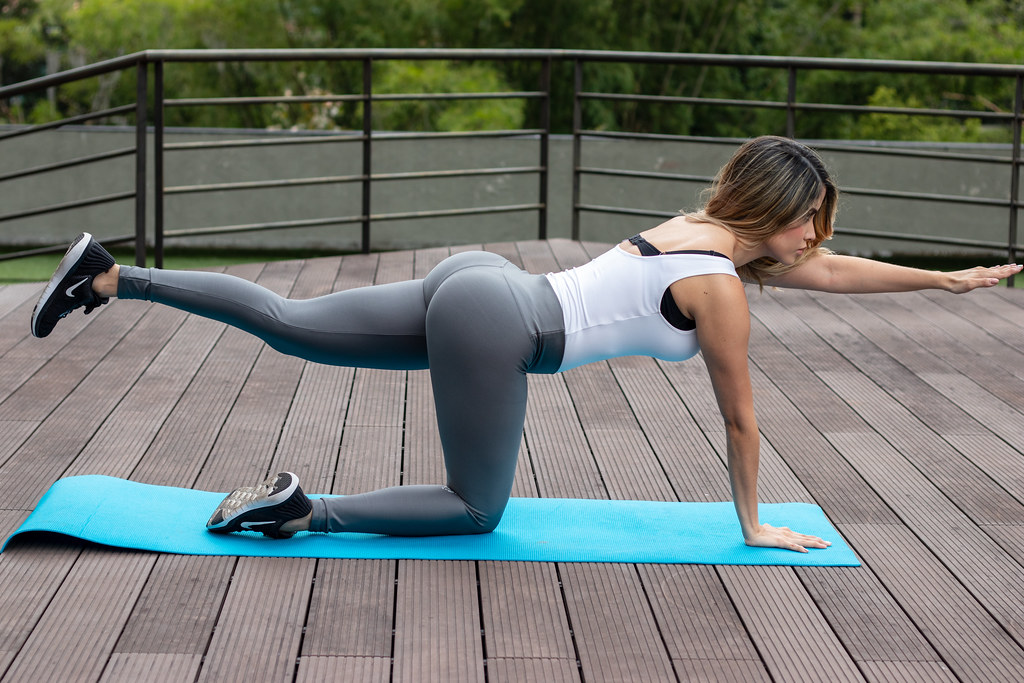
2. **Bird Dogs**
The bird dog exercise stands out as an exceptional choice for enhancing core strength and significantly challenging one’s balance, according to Lampa. This movement, recognized as a signature yoga pose, necessitates the active engagement of both the abdominal and back muscles throughout its execution. Beyond core activation, it plays a valuable role in lengthening the posterior chain, which can contribute to reducing common lower back pain.
Furthermore, the bird dog effectively stabilizes the spine, fostering improved postural control, and consistently works the glute muscles with each leg raise. To perform a bird dog, assume a tabletop position on the floor with your knees bent, hip-distance apart, and your shoulders stacked directly over your wrists. With your core braced and your hips maintained in a square position, gently lift your right hand off the ground and extend your arm straight in front of you. Simultaneously, extend your left leg directly behind you, consciously striving to keep your weight evenly centered. The objective is to be able to visualize a straight line extending from your outstretched hand to your heel. Hold this balanced position for a few seconds, then gracefully return to the starting tabletop position before alternating to the opposite hand and leg. Aim to complete three sets of ten repetitions, focusing on control and fluidity.
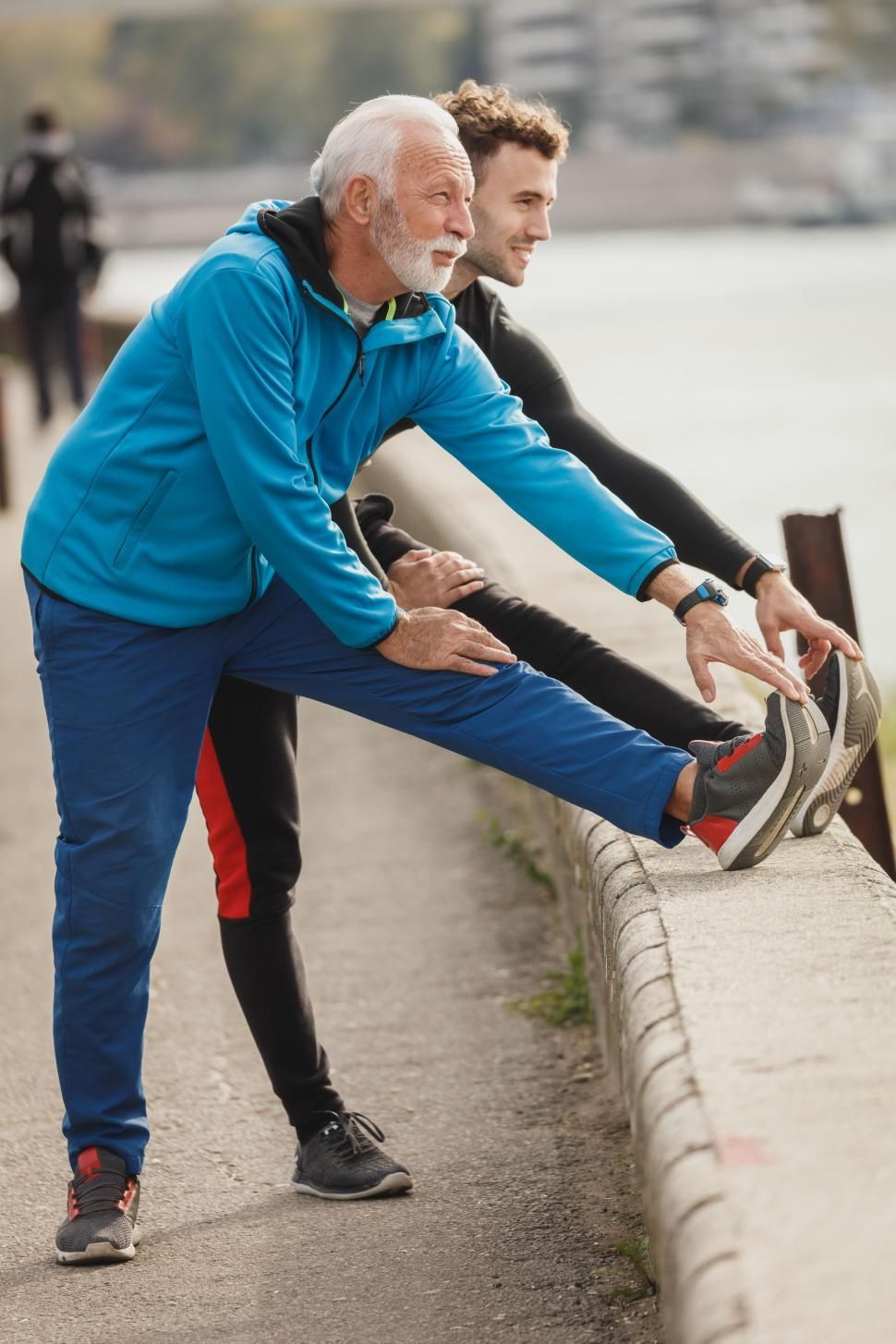
3. **Single Leg Toe Touches**
Many older adults frequently encounter challenges such as joint pain and issues related to stability and posture. A significant number of these problems often originate from suboptimal balance, highlighting a key area for intervention. Consequently, most individuals in their 50s and beyond can realize substantial benefits by incorporating stability-focused exercises into their workout regimens, thereby strengthening the muscles that support sensitive joints. Chris Ryan emphasizes the profound impact of balance control movements, stating, “Balance control movements—such as standing on a single leg for a few seconds with a wall assist and then progressing to a single leg stance without assistance—will work wonders for your balance control.”
To perform a single-leg toe touch, begin by shifting your weight onto your right foot, allowing your left foot to be slightly lifted off the ground behind you. Your arms can either remain down by your sides or be raised straight out to shoulder height for counter-balance. Actively brace your core and maintain a long, extended spine as you bend your right knee and reach down with your left hand to touch your right toes. Concurrently, extend your left leg straight behind you; this counter-movement assists significantly with maintaining balance. The crucial part of the movement involves pressing your right foot firmly into the ground to propel yourself back to a standing position, bringing your left foot to meet your right foot. This completes one repetition. Continue this sequence for four repetitions before transitioning to switch legs. Strive to complete three sets, performing eight to twelve repetitions per leg, prioritizing control and stability throughout.

4. **Reverse Lunges**
Lunges, whether performed in a forward or backward direction, represent fundamental functional movements that closely mimic everyday actions such as walking and running. Tatiana Lampa explains that these exercises are instrumental in “enforcing balance and coordination and strengthening the legs.” Their inherent design promotes unilateral leg strength and stability, crucial for navigating varied terrain and daily activities.
For those looking to incrementally increase the challenge and functional relevance of this exercise, incorporating a step can be highly effective. Lampa notes that this modification “enforces the way you walk up stairs,” directly translating strength gains to practical, everyday movements. Once proficiency in proper form is achieved, individuals can further intensify the workout by holding a pair of dumbbells, thereby simultaneously engaging both the arms and legs, offering a more comprehensive muscular engagement. To perform reverse lunges, begin by standing with your feet positioned hip-distance apart and your hands resting on your hips. Take a deliberate, large step backward with your right foot, then consciously lower your body toward the floor. The aim is to form two distinct 90-degree angles with your front and back legs. Your left thigh should be parallel to the floor, with your knee aligned directly over your ankle. To return to the starting position, press your left foot firmly into the floor, pushing yourself back up. Repeat this sequence for three sets of twelve repetitions, focusing on smooth, controlled movements.
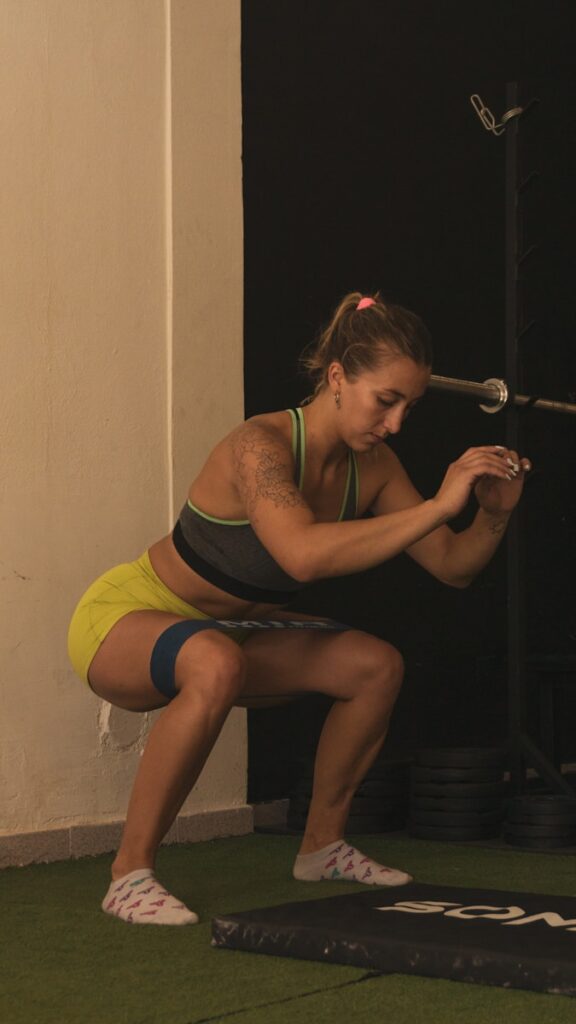
5. **Box Squats**
Box squats are particularly well-suited and highly beneficial for individuals over the age of 50, primarily because they effectively reinforce the very functional and essential movement of sitting down and rising from a seated position. The key to maximizing the effectiveness and benefits of this exercise lies in deliberately varying the tempo of the movement. Rather than simply counting one up-down motion as a single repetition, adopting a structured tempo, such as a 3:0:1 count, can significantly enhance the exercise’s quality. This tempo involves taking three seconds during the eccentric phase—the controlled descent as you squat down to lightly touch the box with your glutes—and one second during the concentric phase, which is the explosive upward movement as you stand up. This precise method of counting helps to deconstruct the movement, allowing for meticulous attention to form and ensuring proper engagement of the targeted muscles throughout the entire range of motion.
For those new to box squats, Ryan strongly advises initiating the exercise without any added weights. This allows for a focused practice on cultivating impeccable form before introducing external resistance. As strength and confidence progress, individuals can then gradually transition to incorporating light dumbbells, and eventually, a barbell, to further challenge their muscles. To execute box squats, position a box of an appropriate height behind you and stand with your feet slightly wider than hip-distance apart in front of it. Actively engage your glutes and core muscles as you slowly lower your butt backward and downward, consciously keeping your body weight distributed primarily in your heels. Once your glutes make contact with the box, forcefully push your weight through your heels to propel yourself back up to a standing position. If utilizing a pair of dumbbells, rest one end of each dumbbell lightly on each shoulder, holding them with your elbows pointing forward. Perform three sets of eight to twelve repetitions, maintaining control and focus on form.
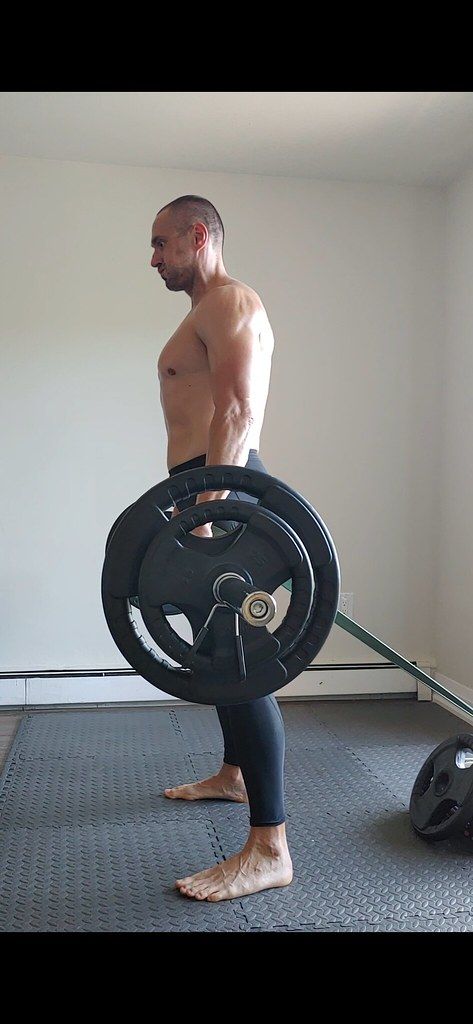
6. **Deadlifts**
Deadlifts are widely recognized as an exceptionally effective exercise for building muscle mass, especially for individuals over 50. This compound movement comprehensively targets several crucial muscle groups, including the hamstrings, glutes, lats, traps, and core, making it a highly efficient exercise for overall strength development. Tatiana Lampa expresses a strong preference for this exercise, stating, “This exercise is by far my favorite because we pick things up from the ground constantly. If we’re able to build the muscles, we decrease the risk of injuries. They’re also a great exercise for better posture.”
The practical application of deadlifts in daily life is undeniable, as it directly translates to the frequent act of lifting objects from the floor, thereby significantly reducing the risk of injuries associated with such movements. Furthermore, the deadlift is remarkably versatile, adaptable to various resistance tools; it can be performed effectively with dumbbells, kettlebells, barbells, and even resistance bands, allowing for progressive overload and accessibility across different fitness levels. To perform a deadlift, stand with your feet positioned hip-distance apart and place a kettlebell directly between the arches of your feet. Grip the kettlebell handle firmly with both hands, ensuring that your shoulders are aligned above your hips, and your hips are positioned above your knees. Actively engage your core and maintain a flat back throughout the movement. Push your shoulders back and down to effectively activate your lats. Then, press your feet firmly into the ground and utilize this leverage to lift the kettlebell, coming to a full standing position. As you lower the kettlebell back to the ground, ensure your spine remains straight, never allowing your chest to fall past your hips. Aim to complete three sets of twelve repetitions, prioritizing controlled and precise movements.
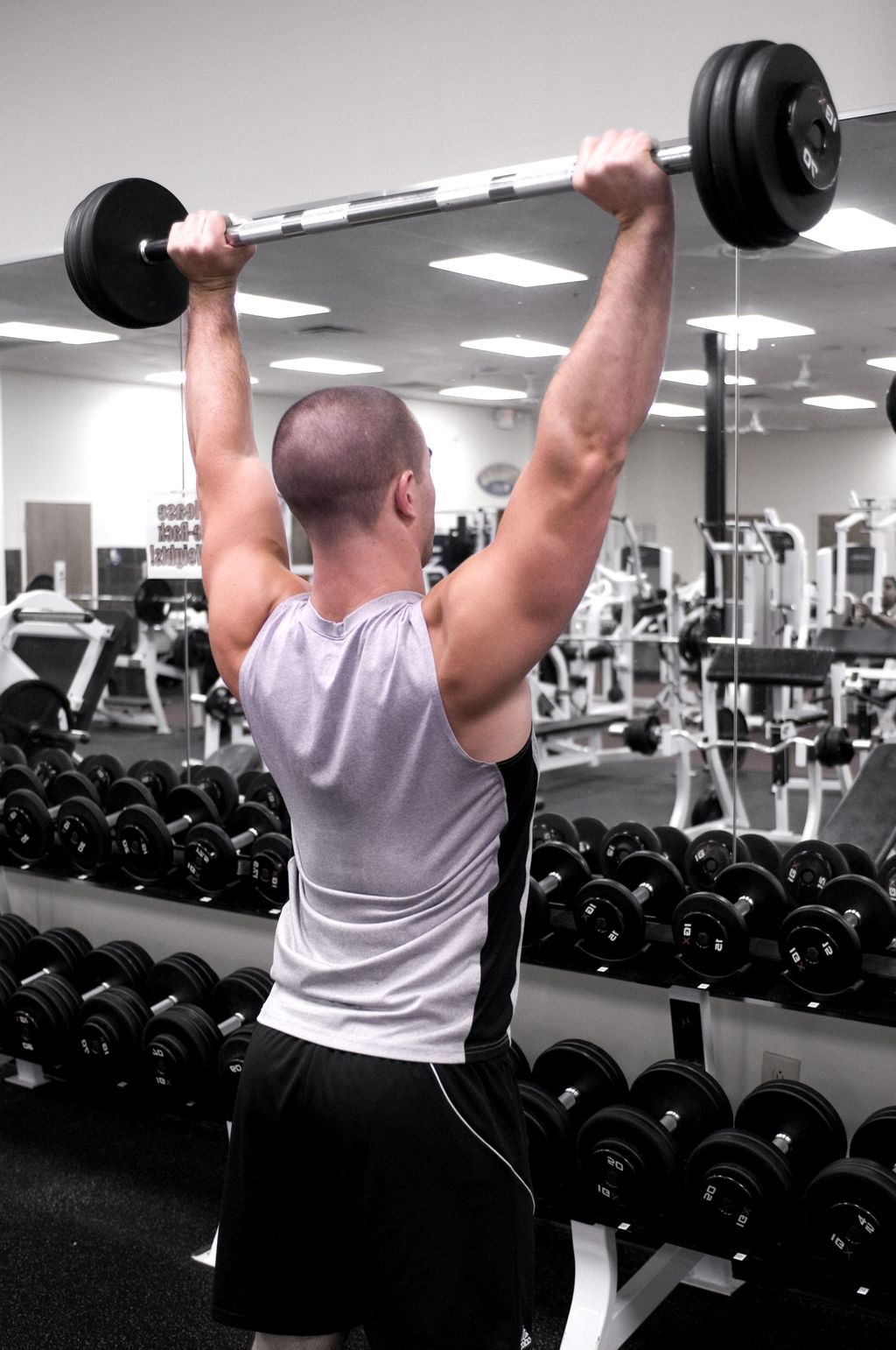
7. **Standing Shoulder Presses**
Standing shoulder presses are a highly favored exercise that Chris Ryan frequently recommends to his clients over the age of 50, and for good reason. This particular movement provides substantial assistance with a myriad of everyday tasks, such as confidently lifting heavy boxes, comfortably carrying large bags, and even the cherished act of holding children and grandchildren overhead. Beyond its direct functional benefits, the standing shoulder press is highly effective in strengthening the shoulders and markedly improving upper body mobility, a quality that can diminish with age if not actively maintained.
Moreover, this exercise simultaneously activates your core, providing an additional, often unexpected, abdominal workout. For those new to the movement or looking for modifications, Ryan suggests starting with “seated presses with light dumbbells before you do standing military presses with a barbell.” He also notes the adaptability of the exercise, adding, “You can also do shoulder presses by standing on a resistance band and pressing the handles overhead.” To perform standing shoulder presses, begin by standing with your feet positioned shoulder-distance apart, holding a dumbbell in each hand. Raise the dumbbells to shoulder height, ensuring your arms form distinct 90-degree angles. With your core actively braced, press the dumbbells directly overhead until your biceps are aligned with your ears, bringing the weights together. It is crucial to avoid arching your back or relying on your legs to drive the weights upward. Slowly lower the weights back down to your shoulders with control. Perform three sets of eight to twelve repetitions, focusing on controlled movement and proper form.
As we continue our exploration into optimizing physical well-being after 50, it becomes clear that a strategic approach to exercise can profoundly impact daily function and long-term health. Beyond foundational strength, targeting specific muscle groups, enhancing joint stability, and improving overall physical capacity are paramount. The following exercises are meticulously chosen to address these advanced needs, providing practical guidance for continued physical development and sustained vitality.
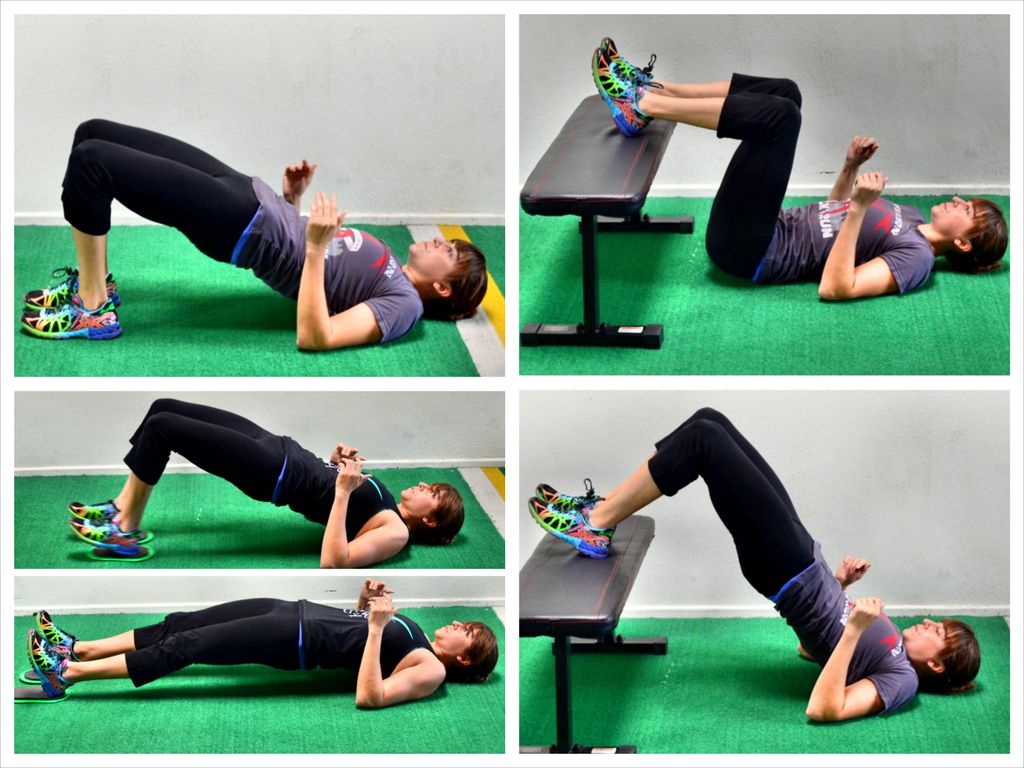
8. **Glute Bridges**
The glute bridge exercise serves as a powerful tool for strengthening the pelvic floor muscles, which can naturally weaken over time due to aging, pregnancy, or childbirth. This weakening often contributes to issues such as incontinence and discomfort during intimacy. By engaging and fortifying the pelvic floor and glutes, glute bridges can effectively alleviate these concerns and enhance overall pelvic health.
To perform a glute bridge, begin by lying on your back with your feet planted flat on the floor, hip-width apart, and your arms resting at your sides. For an increased challenge, position your feet closer to your hips. Actively tighten your glutes and press your hips upward toward the ceiling, lifting your butt off the floor. It’s crucial to avoid lifting your hips excessively high, as this can lead to overextension of the lower back. After holding the peak contraction for a few seconds, slowly lower your butt back down to the floor with control. For an added layer of resistance and to further engage the glutes and abductors, consider looping a mini resistance band around your legs, just above your knees, during the exercise.
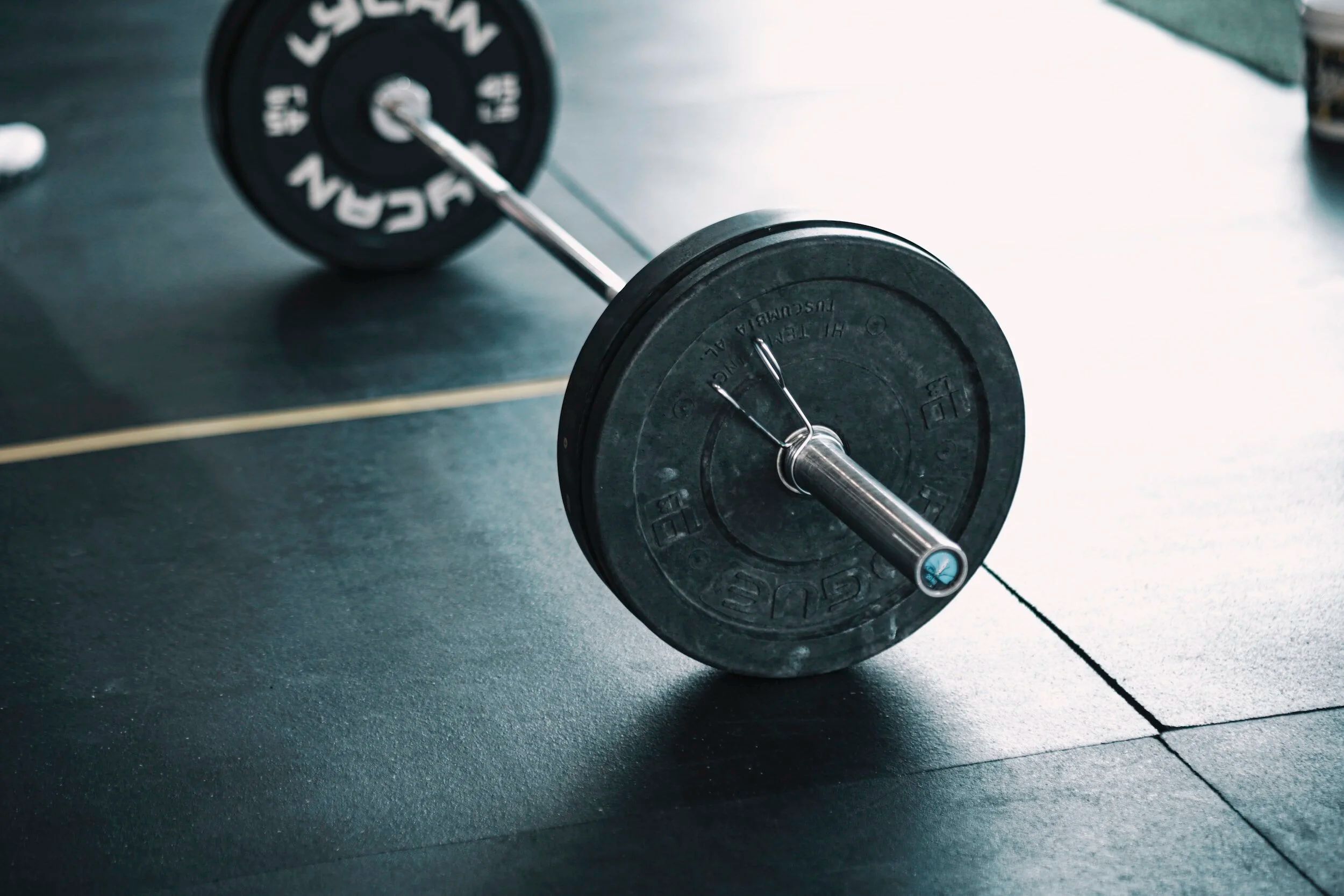
9. **Barbell Hip Thrusts**
Developing strong glutes extends far beyond aesthetic appeal; these powerful muscles are fundamental to improved sports performance and maintaining excellent posture. Barbell hip thrusts stand out as an exceptional exercise for effectively activating and building these crucial power-generating muscles, making them an ultimate choice for glute development. Chris Ryan suggests focusing on “hip thrusts with static tempo holds,” explaining that this approach “will work wonders for your strength versus just cranking out a bunch of reps as quickly as possible,” emphasizing quality over speed.
To execute barbell hip thrusts, sit on the ground with your feet flat on the floor and a bench positioned behind you, ensuring your shoulder blades rest against its edge. Carefully place a barbell directly over your hips. With your feet firmly pressed into the ground and your glutes actively squeezed, drive your hips upward off the floor into a strong bridge position. The objective is to achieve a straight line extending from your shoulders through your hips to your knees at the top of the movement. From this elevated position, slowly and with control, lower your butt back down to the ground. Aim to complete three sets of twelve repetitions, focusing on controlled movements and maximum glute activation.
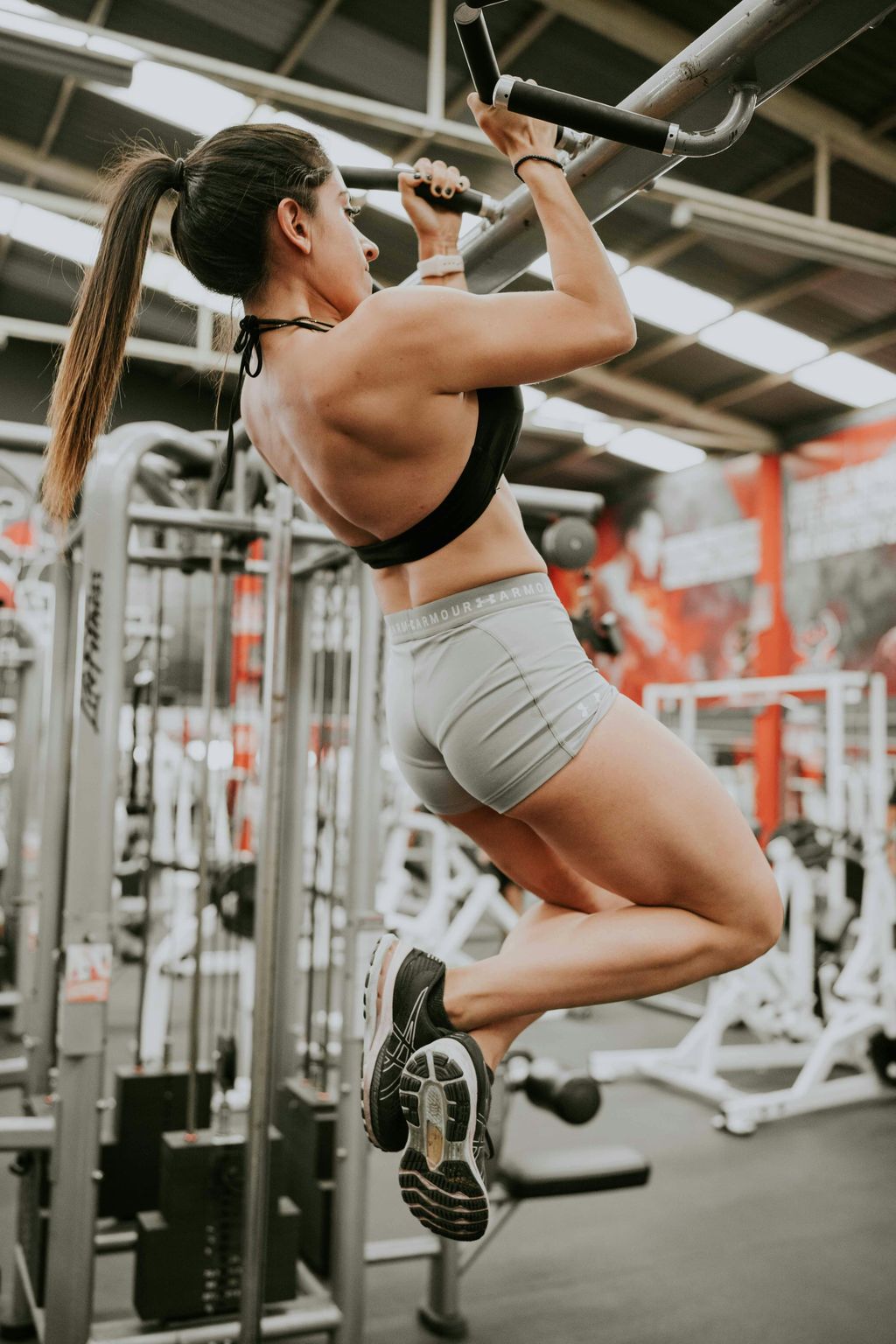
10. **Pull-Ups**
While pull-ups are undoubtedly a challenging exercise and not typically a beginner’s move, mastering one is a significant accomplishment worthy of considerable pride. However, it’s essential to approach this exercise progressively and not rush into it. Chris Ryan strongly advocates for utilizing assistance methods like machines and resistance bands to safely develop the foundational strength required. He advises, “Use bands or a pull-up machine to work on basic upper body pulling strength as well as grip strength safely,” emphasizing a smart, gradual progression.
To perform a pull-up, grip the pull-up bar with both hands, using either an overhand or underhand grip, depending on the variation. Initiate the movement by pulling your shoulders down and back to effectively activate your lats. Then, pull your body upward until your chin clears the bar. Throughout the ascent, maintain your legs together and actively engage your core to prevent any arching of your back or swaying of your hips, ensuring a stable and controlled movement. Slowly lower your body back down to the starting position with control, allowing for a full stretch in your lats before initiating the next repetition.
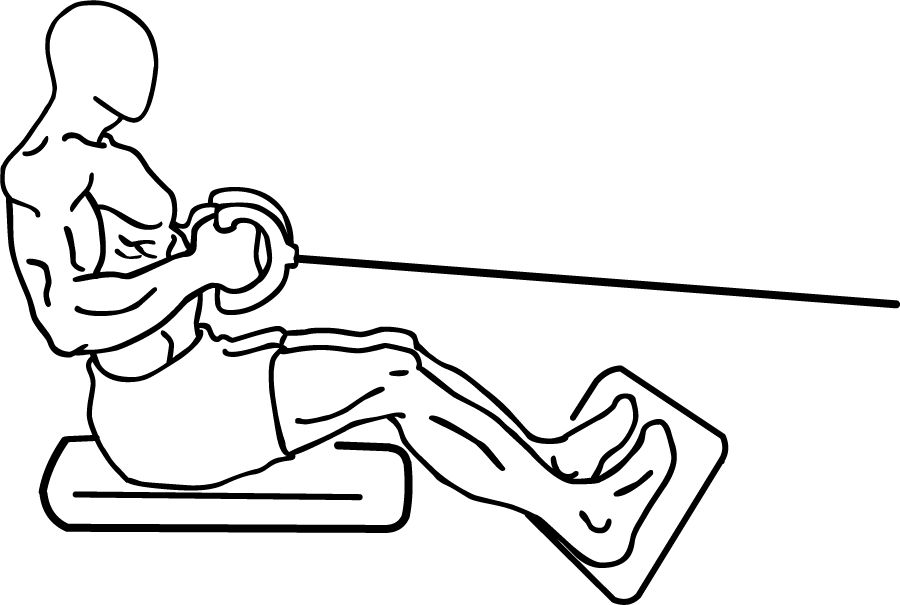
11. **Seated Cable Rows**
In an era where many individuals spend significant time seated—whether at a computer, watching television, or working at a desk—the tendency to slouch becomes a common postural challenge. Tatiana Lampa underscores the critical importance of strengthening the back muscles to counteract this effect, stating, “It’s super important to strengthen the back muscles to enforce good postural practice.” The seated cable row is an excellent exercise for correcting muscular imbalances and fostering improved, sustainable posture.
To perform seated rows, sit down on the cable row machine and place your feet firmly on the footbeds, ensuring your knees are slightly bent. Grip the handles with both hands, palms facing each other. Initiate the pull by drawing the handles toward your torso, keeping your elbows close to your sides, and actively squeezing your back muscles together. Hold this contracted position for a second, feeling the engagement in your upper back, before slowly returning the bar to the starting position with control. This deliberate movement ensures maximum muscle activation and helps reinforce proper posture over time. Strive for three sets of twelve repetitions, maintaining a steady tempo.
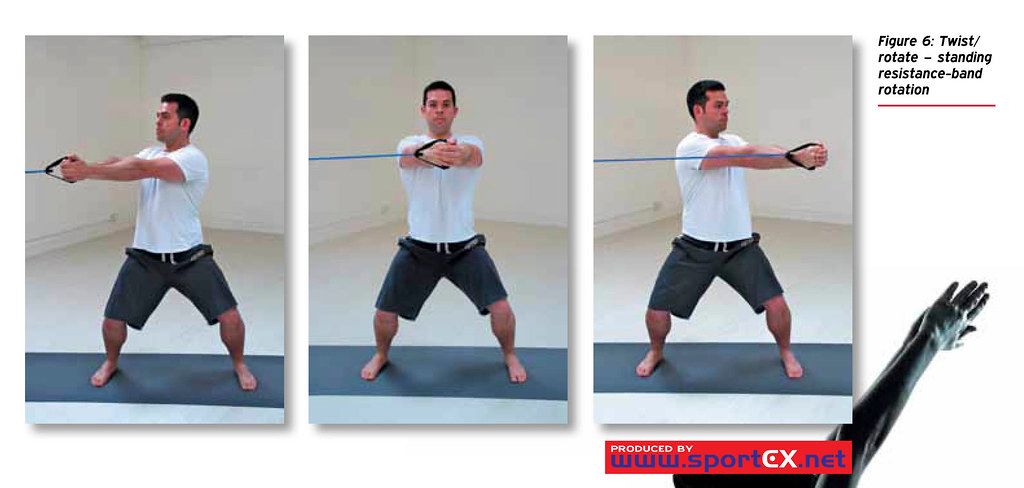
12. **Resistance Band Arm Rotations**
Resistance bands offer an ideal solution for strength training, particularly for older adults, as they allow for muscle development without imposing undue stress on the joints. Chris Ryan highlights this benefit, stating, “Resistance band exercises are a great way to build strength for older people who are afraid that weights may put undue stress on their joints.” He also points out that “the tension is greatest when the muscle is engaged the most in the movement pattern,” optimizing muscle activation.
One highly effective resistance band exercise for enhancing upper body mobility, which often diminishes with age, is arm rotations. Ryan vividly describes the movement: “Think: the fly stroke and the back stroke in swimming while standing on the bands and holding them with your hands.” To perform resistance band arm rotations, stand with both feet positioned shoulder-distance apart on the resistance band, holding one handle in each hand. Begin by pulling the bands apart toward your sides, then rotate your arms forward and backward in controlled, fluid motions. Throughout the exercise, consistently keep your shoulders pulled back and down, engaging your upper back muscles and promoting good posture. Aim to complete three sets of twelve repetitions, focusing on a full range of motion.
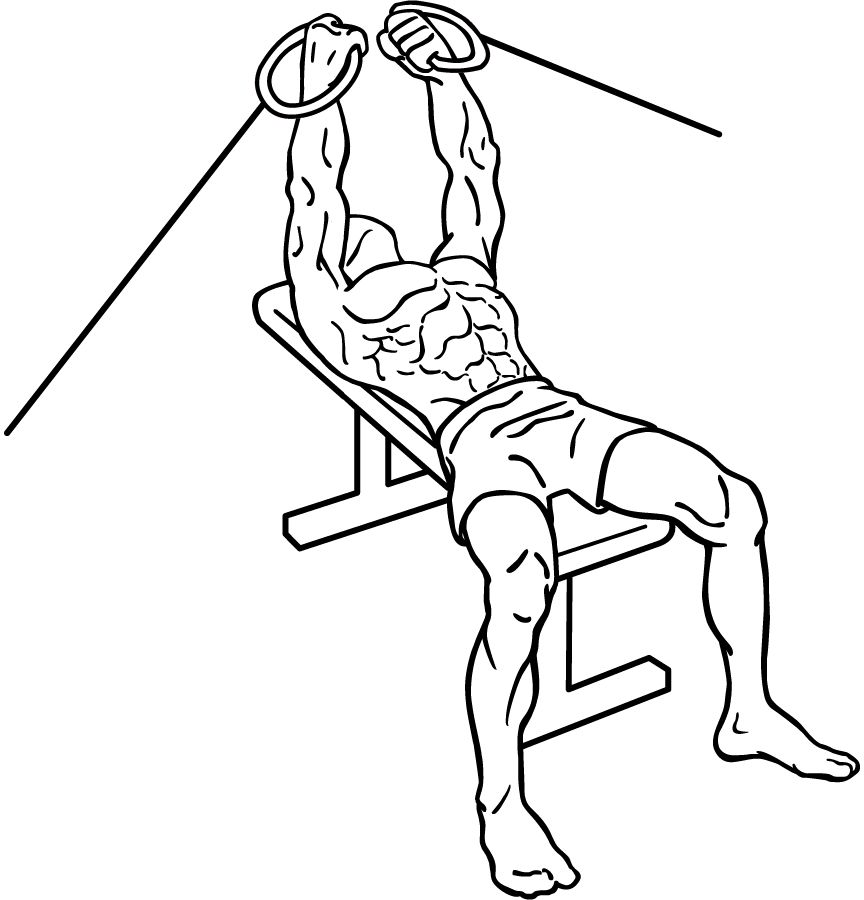
13. **Cable Chest Press**
The cable chest press machine is a highly effective tool for comprehensively strengthening the pectoral muscles (pecs), as well as the deltoids (delts) and triceps. These muscle groups are fundamentally important for a variety of everyday pushing movements, such as confidently pushing open heavy doors or carrying out other functional tasks that require upper-body strength. The controlled nature of the cable machine also allows for consistent tension throughout the movement, promoting efficient muscle engagement.
To perform a cable chest press, stand with one foot slightly in front of the cable machine, holding a handle in each hand with your arms bent at 90-degree angles. Stagger your stance with one foot in front of the other to enhance stability during the exercise. While keeping your torso square and stable, extend your arms forward to press the handles directly in front of you, bringing them together. Hold this contracted position for a second, feeling the engagement in your chest, before slowly returning the handles to the starting position with controlled resistance. Perform three sets of twelve repetitions, prioritizing smooth, deliberate movements and proper form.
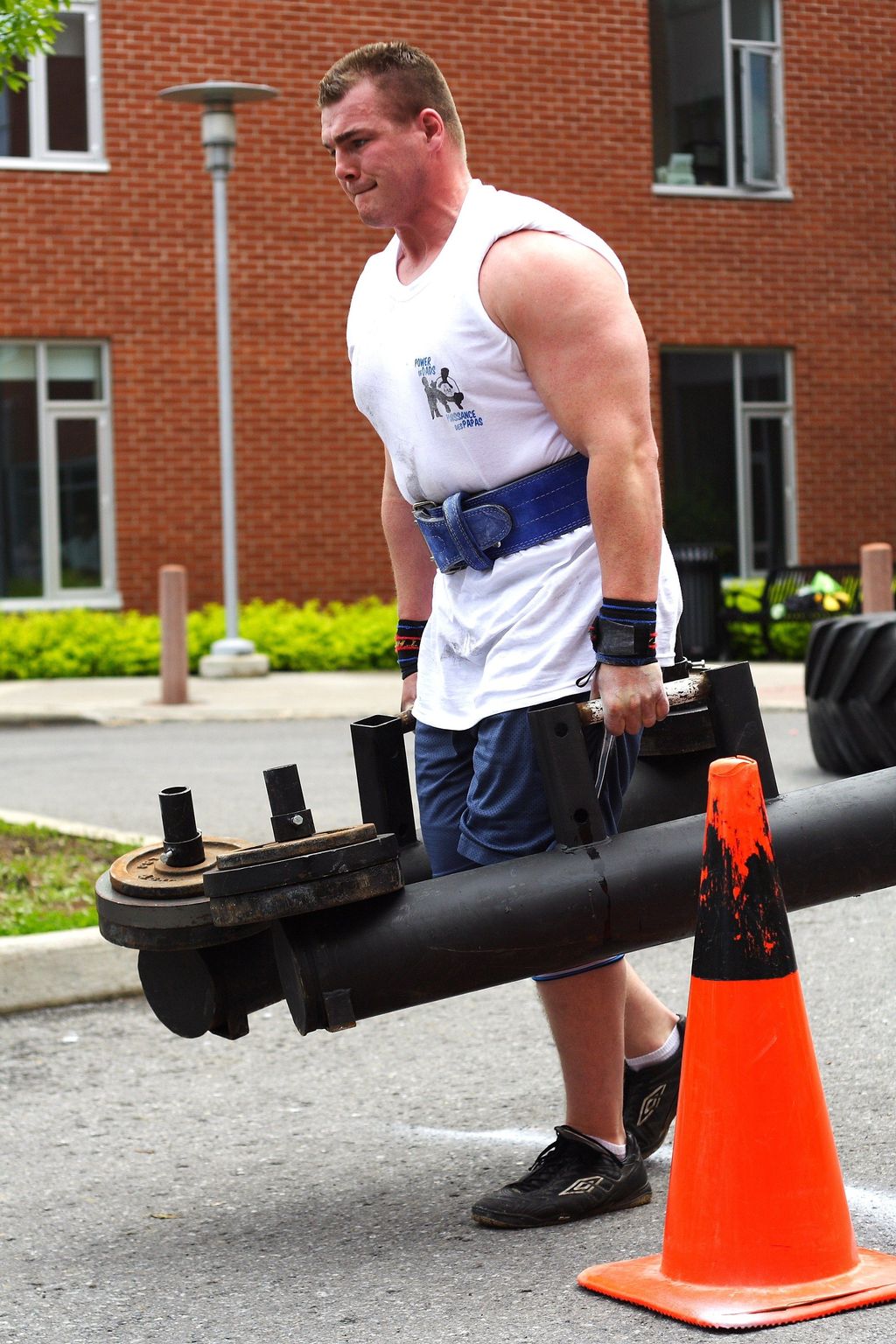
14. **Farmer’s Carry**
The farmer’s carry is an incredibly practical and functional exercise, highly recommended by Charlee Atkins, CSCS, founder of Le Sweat, for its profound impact on strengthening the core and arms. She likens it to the familiar everyday task of “carrying bags of groceries up the stairs,” illustrating its real-world utility. This exercise excels at improving grip strength—a strong grip correlates with longevity and overall health, according to research—and effectively targets upper body muscles such as the biceps and shoulders, providing a comprehensive workout.
To perform a farmer’s carry, stand with your feet positioned shoulder-distance apart, holding a heavy kettlebell or dumbbell in each hand. Actively engage your core, pull your shoulders back and down, and keep your chest lifted. Begin walking forward with a purposeful stride, maintaining the posture and keeping your shoulders stable. Continue walking for as long as you are able to maintain good form before carefully setting the weights down. You can also adjust the distance or time for your sets, ensuring controlled movement throughout the exercise. This simple yet powerful movement builds robust, functional strength that directly translates to daily life.
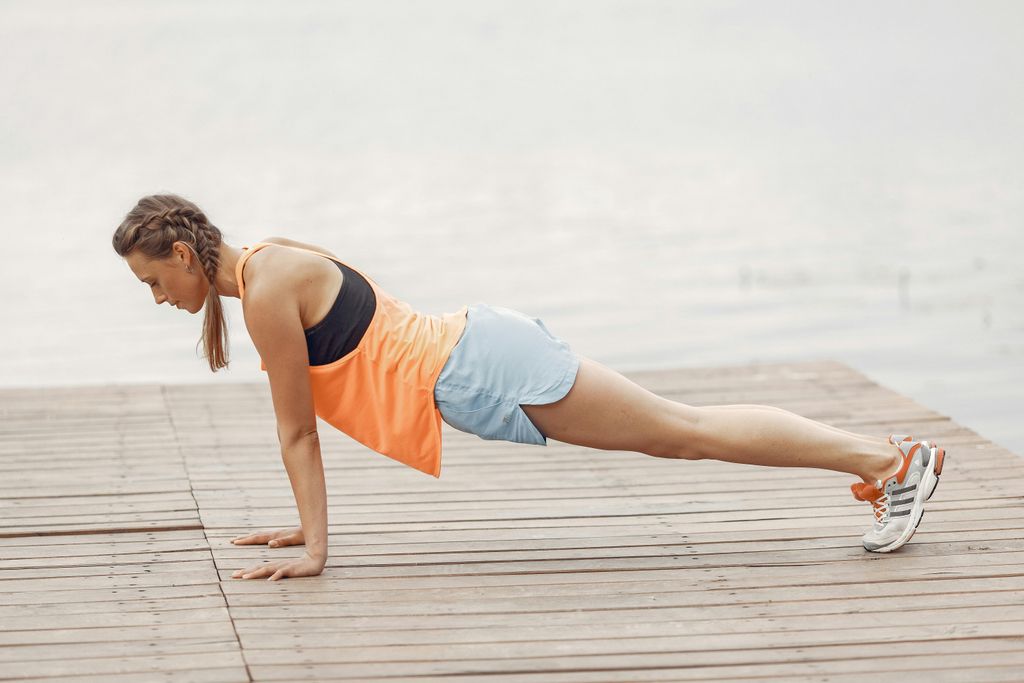
15. **Push-Ups**
Push-ups, along with other push-and-pull exercises, are fundamental for enhancing the functional movements we perform daily, regardless of age. Specifically, the push-up serves as an exemplary push motion exercise for building total body strength. Charlee Atkins emphasizes its practical benefits, noting, “The ability to carry your own weight in the upper body allows you to push things, like shoveling snow,” highlighting its importance for everyday physical demands and overall independence.
To perform a push-up, begin in a high plank position, ensuring your shoulders are stacked directly over your wrists and your back, shoulders, core, and glutes are all tightly engaged to form a straight line from head to heels. As you lower your body toward the ground, allow your elbows to point back at a 45-degree angle, and aim to have your chest lightly graze the ground. Then, pushing against your bodyweight, powerfully press your body back up to the starting plank position without allowing your hips or abs to sink. This controlled movement ensures proper muscle engagement and maximizes the effectiveness of each repetition.
Embarking on a consistent exercise journey after 50 is not merely about staying fit; it’s a proactive investment in your future. It’s never too late to cultivate a gym habit, nor are you ever too old to pursue your physical aspirations, whether that involves sculpting a summer six-pack or simply enhancing your everyday functionality. While age-related muscle loss, known as sarcopenia, is a natural part of aging, numerous studies, including research published in *The New England Journal of Medicine*, consistently demonstrate that resistance training can significantly counteract muscle weakness and physical frailty in older individuals. The key lies in understanding your body’s evolving needs and adapting your routine to prioritize safety, consistency, and recovery. By embracing exercises that build comprehensive strength, improve balance, and enhance endurance, you empower yourself to sustain an active and fulfilling life for years to come. Remember, the goal is not to train like you’re over 50 by drastically lowering intensity; instead, it’s about training smartly and effectively, focusing on building and maintaining as much muscle mass as possible through balanced, full-body sessions and adequate recovery, ensuring you stay stronger for longer.



